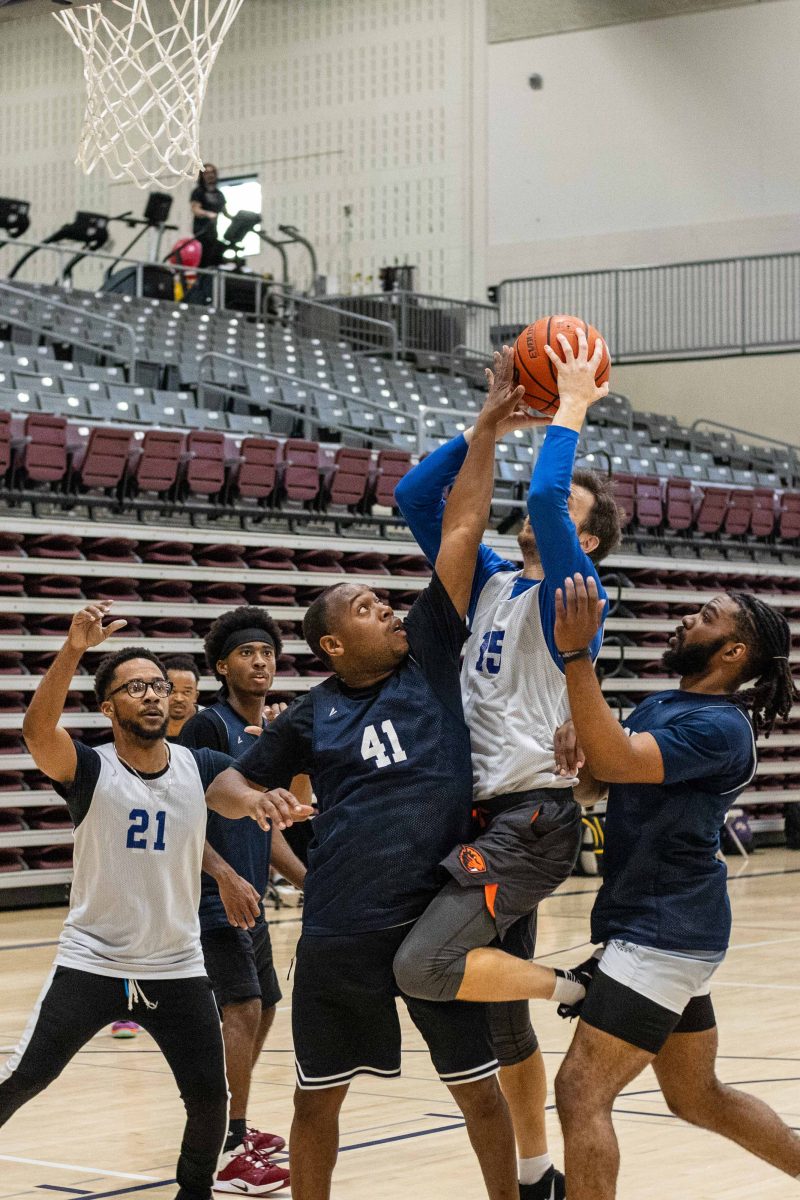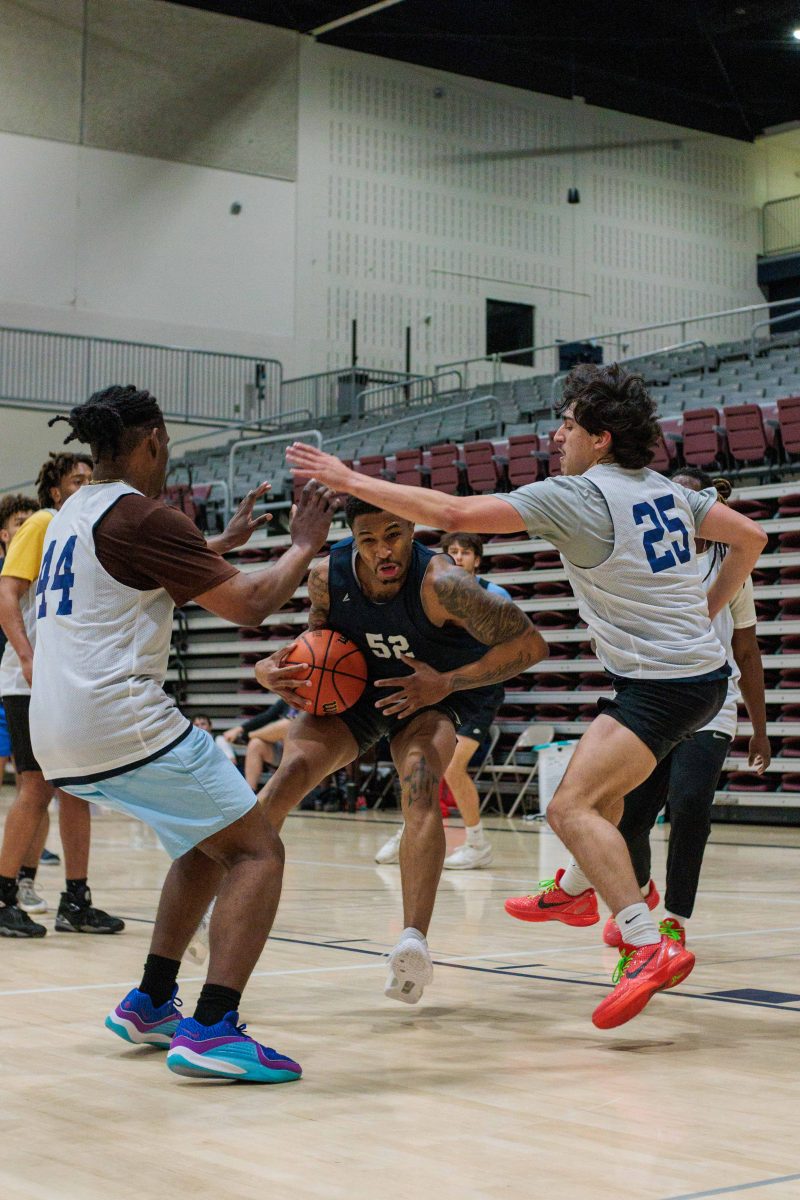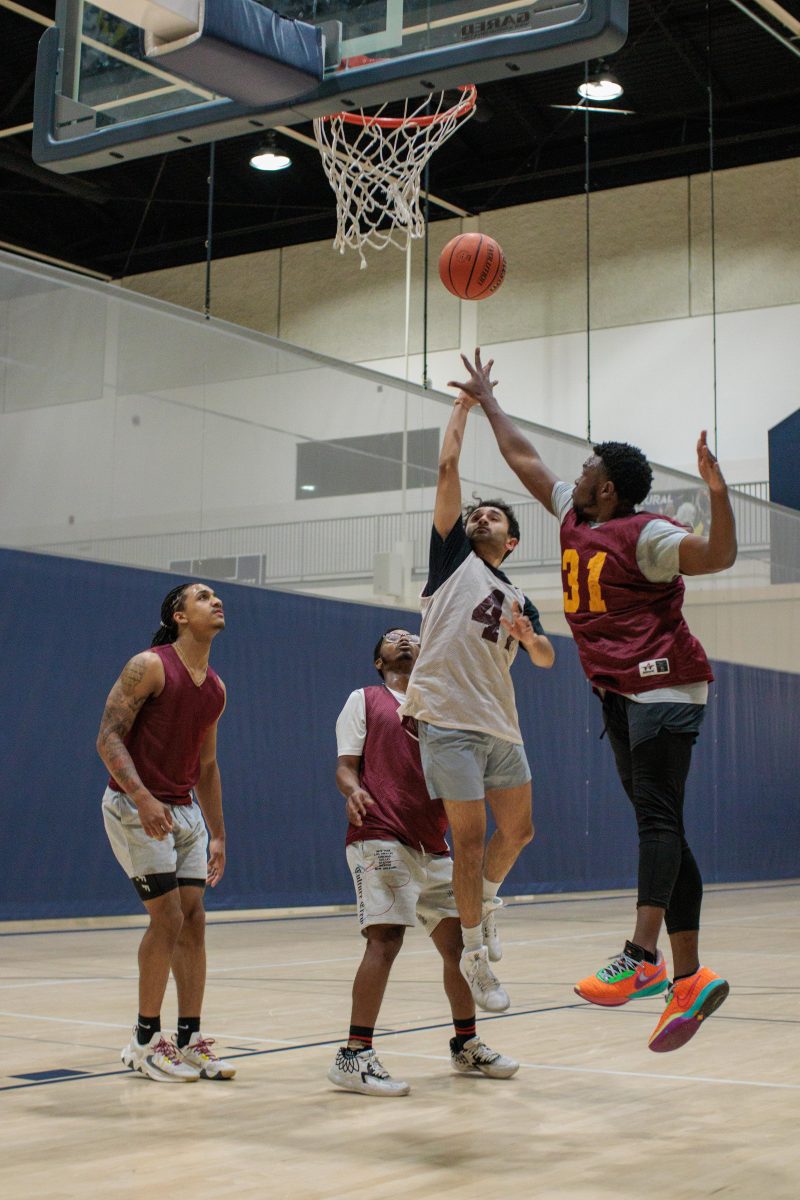
Elizabeth Rhaney, Photo Editor
The Jepson held a lecture by Jeff L. Rosenheim for their exhibit “Helen Levitt: In the Street” April 24. Rosenheim, a curator for the Metropolitan Museum of Art, knew Levitt and talked about her unique approach to photography.
“What is the role of the artist in our society? To follow what they believe have meaning,” he said.
Early on in the lecture, Rosenheim acknowledged how important Levitt was in his life.
“I would not be here if it wasn’t for Helen Levitt,” he said.
Rosenheim said Levitt dropped out of high school to pursue a career in photography. She met famous photographer Walter Evans and the famous writer James Agee.
Her photos were of street life in New York. She used a tool called a right angle viewfinder to get candid, close shots of people. Her photos show children playing, neighbors catching up on events and ordinary scenes that are often overlooked.
“Photography is about paying attention, looking at things afresh,” Rosenheim said. He said Levitt showed that our everyday lives had just as much wonder as any fiction we could imagine.
He showed a picture she took of children playing on the columns of a doorway. The kids, he said, resembled the statues seen on the friezes of ancient Greek architecture. He also showed a picture Levitt took of graffiti. He said Levitt saw graffiti as a “modern hieroglyph and treated it like an archeologist.”
Rosenheim said Levitt made a living as a film editor from 1945 to the 1960s. Her film “In the Street,” released in 1952, is in the Jepson’s exhibit. She worked with James Agee and Janice Loeb on the project.
Rosenheim answered a few questions after the lecture, then went with the audience upstairs to look at the exhibit.
Mike Jones, a visitor to Savannah who is studying photography, was excited to see the exhibit. He had seen some of Levitt’s work before and always had an interest in photography of life in large cities.
Lynne Wilson had not heard of Helen Levitt before but said that the museum publication for the exhibit is what encouraged her to come to the lecture and view the collection.
Many people enjoyed listening to Rosenheim talk about the connection he had with Levitt.
“It was so moving because he knew the artist,” Joyce Herolt said .
“He made her feel as if she was still alive,” Julie Iorio said.
“It was outstanding because of his connection to the artist and love of photography,” said John Jensen, a professor at Armstrong. Although he teaches ceramics, Jensen said he got into art through photography and had studied Levitt’s work.
The exhibit was formed in part through a partnership with the High Museum in Atlanta, which donated 10 works to the show. “In the Street” will be at the Jepson until Sept. 21.
There is also an exhibit of the work of contemporary artist James Nares. “Street” features a 61-minute film played in very slow motion. If played in real time, the film would be three minutes.
The Jepson is also showing “Marilyn: Celebrating an American Icon,” “Slavery and Freedom in Savannah,” “Karrie Hovey…the Garden Grows: Inside and Out” and the contemporary art collection of Museum of Modern Art curator Kirk Varnedoe.
There will be a photography camp for kids based on Helen Levitt’s work during the summer. For more information on the camp or any of the events happening at the Telfair Museums visit www.telfair.org.








